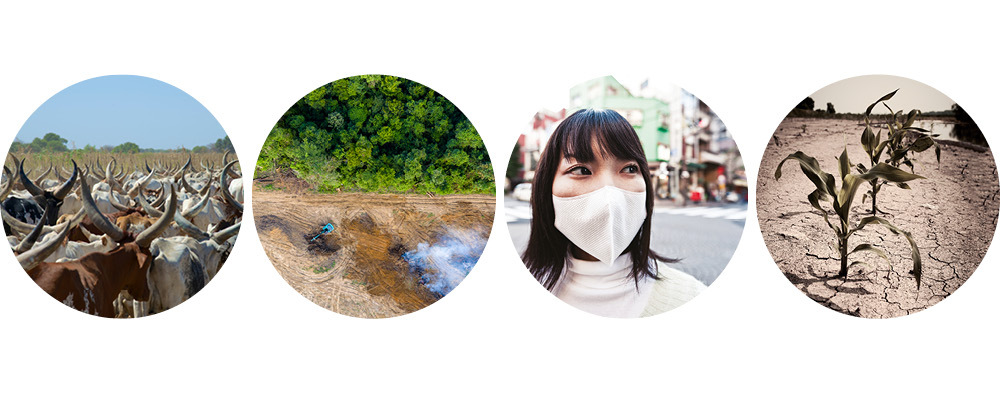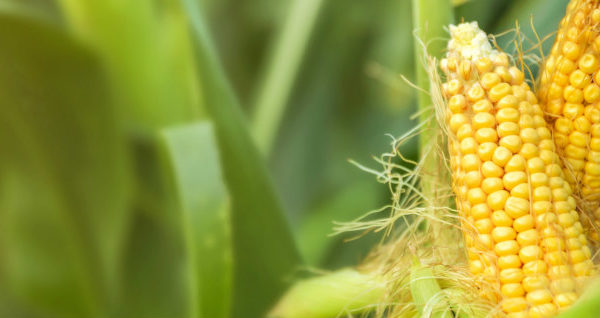
While drafting the inaugural Editorial for CABI One Health, an interesting discussion took place within the Editorial Board. We share some of these thought-provoking points in the form of a Q&A with Editor-in-Chief Jakob Zinsstag and Deputy Editor Lisa Crump.
This is exactly where CABI One Health will make a difference to this emerging and evolving research area by emphasizing research findings and case studies that demonstrate the benefits of a closer One Health cooperation. By placing the requirement that authors describe the One Health impact within their articles at the heart of the journal’s scope, we hope the journal will drive forward this field of research and build upon the knowledge base.
In terms of defining benefits, CABI One Health takes a broad view that the benefits of One Health cooperation can be demonstrated as financial savings, incremental knowledge, improved human, animal or plant health, sustained ecosystem services and social resilience that could not be achieved without such a cooperation.
Financial savings are one of the positivist benefits of closer cooperation by applying a One Health approach. From a practical standpoint, evidence on financial benefits are a strong argument to convince a minister or policy advisor to take notice of One Health. However, the other benefits of better health and wellbeing of humans and animals are equally important, although they have very different metrics. The benefits of One Health are multiparametric and can be presented as an array. We need more examples for all the different benefits of One Health. We hope the journal articles will deliver more knowledge in this area and we offer article types such as commentaries and policy forums to stimulate discussion. We also encourage evidence and gap maps to highlight areas where more research is needed.
Yes, we believe One Health approaches should lead to more holistic finance and investment models, like development impact bonds (DIB). DIBs evolved from the Social Impact Finance movement that emerged during the governance of Tony Blair in the United Kingdom. A DIB consists of an intervention that is funded upfront by an investor. The investor is successively refunded based on the results (impact) of the intervention by an institutional donor (often a development agency). The risk of the investment in the intervention is shared between the investor, the recipient (usually a country) and the institutional donor. An speculative example is provided for the elimination of dog rabies in Chad (Anyiam et al. 2017). We are currently lacking clear examples that demonstrate an incremental benefit from holistic finance and investment models and hope to see new research on this area submitted to the journal. We currently use the term financial savings because we have good examples of financial savings from applying a One Health approach. We hope CABI One Health will contribute to more published examples, which will further develop the thinking within this area.
We fully agree. One Health should certainly address public goods which are difficult to see or measure. There are currently no examples, although research is ongoing (for example, on a game theory of One Health). We would encourage work in this area to be submitted to CABI One Health.
When we consider the application of One Health within a socio-ecological system (SES), animals, plants and ecosystems are all part of the ecological component of the SES, while humans are part of the social component of the SES. Examples below illustrate this interconnection: A closer cooperation of Maternal and Child health and phytopathology services in Uganda provides health care for children and when mothers bring along plants with diseases, they obtain competent plant health counseling in the same location. Farmers spraying antibiotics onto crops may contribute to antimicrobial resistance, which in turn may appear in humans or animals (Taylor and Reeder, 2020). Pastoralist women’s source of vitamin A in Chad is almost exclusively milk from cows or camels because they rarely have access to vegetables or fruit. The vitamin A in cow milk in turn depends on the beta-carotene content of the fodder. The latter is, however, much more difficult to prove because of the high variability of beta-carotene content in grass and the mobility of the pastoralist herds (Crump et al. 2017).
Cross-species genome sequencing (i.e. www.NextStrain.org ) identifies how pathogens are shared between humans and animals and how they are potentially transmitted. There is a huge potential for One Health integrated environment-wildlife-domestic animal-human surveillance-response to prevent future pandemics resulting from the past Avian Influenza and Covid-19 pandemics, which should also address biosafety and animal wellbeing at the animal-human interfaces at multiple levels, considering, for instance, animal production, transport and marketing.
Yes, a One Health approach works in an interdisciplinary way between a multitude of academic disciplines, developing methods which bridge (Julie Thompson Klein, 1993) different ways of how knowledge is created (epistemologies). Interdisciplinary research between two different disciplines finds ways to co-create knowledge between different epistemic systems. For example, the concept of “access to health care” proposed by medical anthropologist Brigit Obrist et al (2007) was converted to a mathematically quantifiable concept of intervention effectiveness for dog rabies mass vaccination (Muthiani et al. 2015) and to a mixed method approach to a health care intervention effectiveness cycle (Mosimann et al. 2017).
One Health interventions inherently engage between academic and non-academic actors, seeking to create transformational knowledge through combining systemic and practical knowledge. Such transdisciplinary approaches co-produce new transformational knowledge by combining academic systems knowledge and non-academic practical knowledge to solve societal problems (Hirsch-Hadorn et al. 2008). In a participatory stakeholder meeting between pastoralists in Chad and veterinary scientists, problems with the use of anthrax vaccine were reported. The pastoralists noted that while the vaccine had been protective when administered previously, more recently, animals who received it had died. When the vaccine was analyzed microbiologically, it was found to be contaminated with Bacillus cereus. The contamination was not detected by the local vaccine production laboratory because their only quality control was a Gram stain analysis, which cannot differentiate between the two bacteria. Because of the dialogue between scientists and pastoralists, the vaccine production was rehabilitated using more modern gamma phage quality testing. This vaccine quality improvement could not have been achieved without such a dialogue.
More about One Health
CABI’s One Health resources are edited by Jakob Zinsstag and Lisa Crump, from the Swiss Tropical and Public Health Institute, Switzerland.
Comprising an Open Access journal, a collection of educational case studies, and a database of one health content, the resources stress the relationship between humans, animals, plants, ecosystems and their shared environment in a transdisciplinary way.
Submissions are now being accepted for both CABI One Health and One Health Cases. Find out more about CABI’s One Health Resources here.
References:
Anyiam F, Lechenne M, Mindekem R, et al. Cost-estimate and proposal for a development impact bond for canine rabies elimination by mass vaccination in Chad. Acta Trop 2017; 175: 112-20.
Taylor P, Reeder R. Antibiotic use on crops in low and middle-income countries based on recommendations made by agricultural advisors. CABI Agriculture and Bioscience 2020; 1(1).
Crump L, Bechir M, Ngandolo BN, Daugla DM, Hattendorf J, Zinsstag J. Seasonal dynamics of human retinol status in mobile pastoralists in Chad. Acta Trop 2017; 166: 280-6.
Hirsch Hadorn G, Hoffmann-Reim H, Biber-klemm S, et al. Handbook of Transdisciplinary Research: Springer; 2008.
Obrist B, Iteba N, Lengeler C, et al. Access to health care in contexts of livelihood insecurity: a framework for analysis and action. PLoS medicine. 2007; Sect. 1584-8.
Muthiani Y, Traore A, Mauti S, Zinsstag J, Hattendorf J. Low coverage of central point vaccination against dog rabies in Bamako, Mali. Prev Vet Med 2015; 120(2): 203-9.
Mosimann L, Traore A, Mauti S, et al. A mixed methods approach to assess animal vaccination programmes: The case of rabies control in Bamako, Mali. Acta Trop 2017; 165: 203-15.
Julie Thompson Klein: Interdisciplinarity. History, theory, and practice. 3. Edition. Detroit: Wayne State University Press, 1993.
1 Comment
Leave a Reply
Related News & Blogs
Overcoming the challenges and complexities of posting preprints
On 29 April, CABI co-hosted an event about preprints with ASAPbio. This open-access webinar considered trends in agriculture and plant science and reviewed aspects of posting preprints, including their benefits, how they fit more broadly into science c…
3 June 2021






Great initiative! And the Editorial was excellent. We have been trying to contact Lisa Crump to join us for a webinar on AMR from the Environment, a One Health approach as we will be presenting initial findings May 18th 3pm to 4.30PM CET Geneva time. https://g2h2.org/posts/may2022/